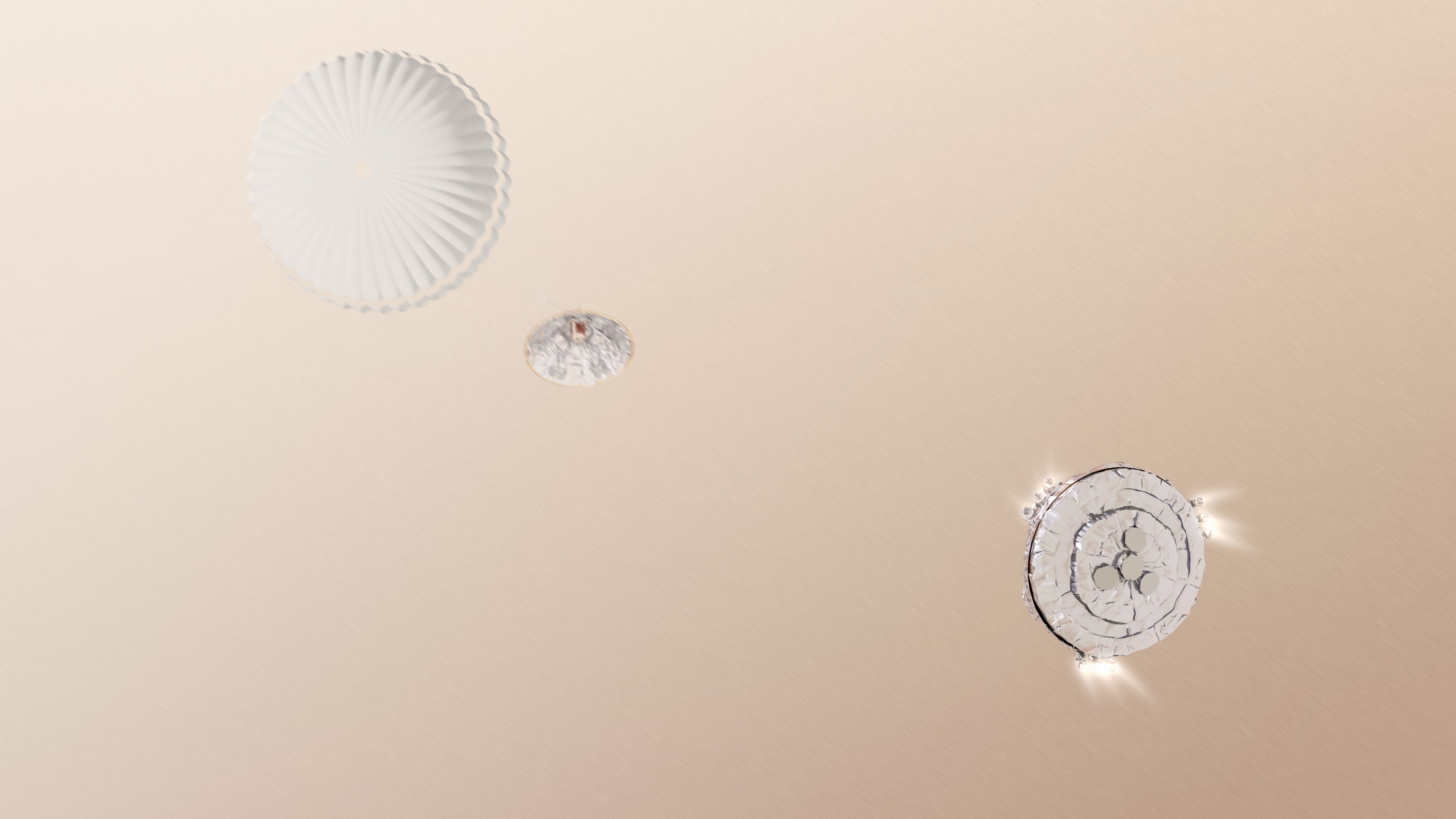
Illustration showing the moment the Schiaparelli lander was to jettison its back shell and parachute and ignite its descent engines. A preliminary analysis suggests this stage happened prematurely, likely the result of a software error. (Image: ESA/ATG Medialab)
Photos of a huge circle of churned-up Martian soil leave few doubts: a European Space Agency (ESA) probe that was supposed to test landing technology on Mars crashed into the red planet instead, and may have exploded on impact.
Mars-probe loss is a chance for ESA to learn
The events of 19 October may be painful for ESA scientists to recall, but they will now have to relive them over and over again in computer simulations. The lander, called Schiaparelli, was part of ESA’s ExoMars mission, which is being conducted jointly with the Russian Space Agency Roscosmos. It was a prelude to a planned 2020 mission, when researchers aim to land a much larger scientific station and rover on Mars, which will drill up to 2-metres down to look for signs of ancient life in the planet’s soil. Figuring out Schiaparelli’s faults and rectifying them is a priority, says Jorge Vago, project scientist for ExoMars. “That’s super important. I think it’s on everybody’s mind.”

